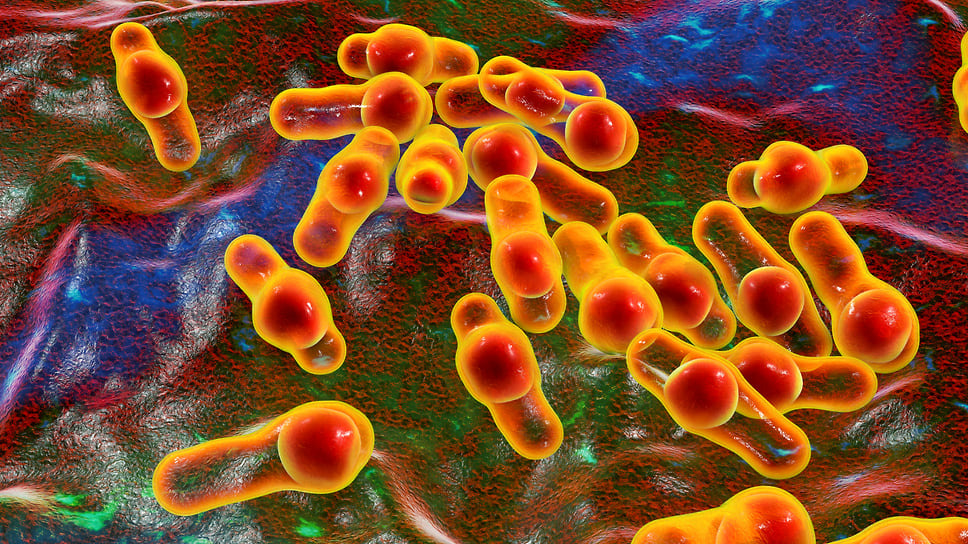Biomass is used for the benefit of society – Hi-Tech – Kommersant
[ad_1]
Last year, scientists from Europe and the United States made several major discoveries in bioelectricity, namely the extraction of electricity from bacteria, biofilms and other biomass microorganisms. The main goal of such research is to create renewable autonomous energy sources that not only do not produce harmful emissions, but can even reduce them.
element energy
In mid-December, researchers from the University of Bayreuth (Germany) declared about a discovery that could significantly accelerate the practical application of microbial fuel cells outside the laboratory. They found that the ability to extract the electricity generated by microbes (bacteria and other microorganisms) can be markedly increased depending on the material of the electrodes.
At the beginning of the 20th century, scientists discovered a significant energy potential in microorganisms, bacteria, and cells. In the course of their life activity, bacteria absorb carbohydrates and release carbon dioxide, protons and electrons. This is what scientists decided to use, who created microbial fuel cells (microbial fuel cell, MFC, or MFC). In recent years, researchers have put experiments to create a garbage can with biowaste, from which it will be possible to charge any compact device, such as a telephone. Anaerobic microorganisms that live in anoxic conditions make it possible to create microbial fuel cells. This makes it possible to process waste directly into biofuel. This technology is already being used in agriculture, where there is a lot of biowaste. The bacteria produce methane biogas, which can be used to heat a home or run a generator. One of the promising industries is the “breeding” of bacteria that can deal with environmental threats, including oil spills.
MFC consists of two reservoirs. One contains bacteria, carbon dioxide, and an anode (an electrode where electrons move away from it). In the other, there is oxygen, for example, in the composition of water, and a cathode (an electrode that attracts electrons to itself). The reservoirs are separated from each other by a membrane capable of passing protons. The protons released by the bacteria pass through the membrane into the cathode chamber. The electrons released by the bacteria go to the anode, then through the external circuit they go to the cathode, where they combine with protons and oxygen. The movement of electrons from one reservoir to another forms an electric current. The disadvantage of this method of generating electricity is its low power, which is calculated in microamperes.
To increase the electrical conductivity in a microbial fuel cell, scientists at the University of Bayreuth tried electrodes made from two different materials – carbon microfiber and cellular stainless steel.
It turned out that electrodes made of cellular stainless steel provide the highest bioelectric conductivity if their surface is covered with highly conductive carbon black.
Empirically, scientists have also found that the optimal distance between the cathode and anode in a microbial fuel cell is 4 cm. there is no conventional power supply or it is too expensive to use it – from the mains or standard batteries.
“The significantly higher performance that we have been able to obtain from microbial fuel cells using innovative electrodes can be explained as follows: the combination of materials we obtained gives a much larger volume of specific surface through which microorganisms can transmit electricity. This is expressed in a greater flow of electrons, which, being released as a result of microbial metabolism, enter the electrical circuit, ”explained the results of the study, the head of the research group on bioprocesses at the University of Bayreuth, Simeon Imology.
If I change the batteries
Scientists at Yale University (Connecticut, USA) are also actively looking for a solution to the problem of low current strength from MFCs. In September they declared about an interesting discovery related to biofilms (communities of microorganisms) from special bacteria that live deep underground or under water in ultra-low light conditions, that is, almost in darkness. During their life cycle, these “dark” bacteria release electrons in small volumes, i.e. electricity. This is due to microscopic protein fibers. But when such bacteria are exposed to light, natural or artificial, their protein nanofibers begin to work several times more productively, thus the bacterium releases many times more electricity. Exposure to light on such bacteria can increase their electrical conductivity by 100 times, creating a photoelectric current lasting several hours. As a result of their research, scientists announced the discovery of a new form of photosynthesis.
“Dramatically increasing the current in the nanofibers of bacteria exposed to light produces a stable photovoltaic current for many hours,” said Nikhil Malvankar, assistant professor of molecular biophysics and biochemistry at Yale University. Scientists believe that the discovery of such a pattern will make it possible to use the hidden electrical potential of microorganisms for a number of tasks – from the removal of garbage and pollution of biological origin to the creation of full-fledged biological and renewable energy sources.
Scientists from Binghamton University (New York, USA) have advanced even further. In June they published the results of the study, during which a real bio-battery was created, which, unlike existing MFCs, can operate not for several hours, but for several weeks. The research was carried out thanks to a special grant of $500,000 from the US Office for Marine Research.
The researchers created a plug-and-play battery that is ready for real work with electrical devices. Moreover, the configuration of such a biobattery makes it possible to maintain and even increase the voltage and current by adding new elements to an already working battery or replacing used components.
Scientists have changed the standard MFC scheme by creating three vertically located and isolated from each other reservoirs with various bacteria. “The top tank contains photosynthetic bacteria that produce organic food for the bacteria in the second, middle tank. These bacteria are needed to produce nutrients already for the electricity-generating bacteria that are in the third, lower reservoir. The constant nourishment that the “lower” bacteria receive from the “middle ones” allows them not only to increase their work time, but also the current strength, ”explain the authors of the study, Sean Choi, Anwar Elhadad and Lin Liu. Scientists compare the structure of biobatteries they created with the Lego constructor – they can not only replace tanks with certain bacteria that have exhausted their resource, but also connect the batteries themselves to each other, increasing the total current strength. The size of one battery is small – 3×3 cm in width and length, so if you wish, you can create from them not only a more powerful battery, but also a semblance of a power plant. The authors of the study believe that such biobatteries-designers could be most useful for ensuring the smooth operation of the Internet in remote regions of the planet.
“Now we have 5G networks, 6G networks should be launched in the next few years,” emphasizes Sean Choi.— To work in such networks, the “Internet of things” requires “smart”, but very compact devices. How can we power such miniature devices, which can be located far from traditional energy sources? We cannot go there to change the battery or accumulator every time. For this, we will need miniature renewable energy sources.”
[ad_2]
Source link










